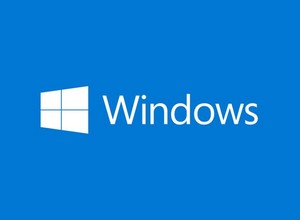 [German]When Windows 10 22H2 reaches out of support as planned on October 14, 2025, enterprises can buy Extended Security Update (ESU) licenses from Cloud Solutions Provider (CSP) to receive 3 extra years of security updates. Administrators who manage larger client fleets with Windows 10 22H2 via Microsoft Intune can activate the ESU licenses there.
[German]When Windows 10 22H2 reaches out of support as planned on October 14, 2025, enterprises can buy Extended Security Update (ESU) licenses from Cloud Solutions Provider (CSP) to receive 3 extra years of security updates. Administrators who manage larger client fleets with Windows 10 22H2 via Microsoft Intune can activate the ESU licenses there.
I have already commented extensively here in the blog on the end of support for Windows 10 22H2 on October 14, 2025. End of life (EOL) means that the products will continue to work, but will no longer receive support or security updates from Microsoft. However, there are ways to continue receiving updates via the fee-based Extended Security Update Program (ESU).
For enterprise environments with Windows 10 Pro, Enterprise and Education, ESU is available for three years and the ESU license thing starts at 61 US dollars. The price of a license doubles every year. If a Windows 10 22H2 client is activated with an ESU license, it will continue to receive updates as usual via Windows Update.
As far as I know, ESU licenses for companies will be available for purchase from Cloud Solution Providers (CSP) from September 2025.
How do I activate ESU via Intune?
With Windows 7, I remember that it was a bit of a fiddle to assign the valid ESU license to my client. With many hundreds of clients, this is a time-consuming process for administrators. However, Microsoft wants to support the activation of corresponding ESU licenses via Microsoft Intune. Raphael recently pointed me to the Techcommunity article Enabling Extended Security Updates (ESU) for Windows 10 with Intune via Facebook (thanks for that).
Jon Warnken, Cloud Solutions Architect, has created a guide on how to enable Extended Security Updates (ESU) for Windows 10 22H2 using Intune. The guide is particularly useful for systems that cannot be updated to Windows 11.
If you have purchased the required paid licenses by registering the affected Windows 10 systems in the ESU program, the next step is to install and activate the ESU key for each client (see Enable Extended Security Updates (ESU)).
To be able to activate an ESU license on the client, the update KB5046613 or higher must be installed under Windows 10 22H2. The Windows 10 client needs access to the network endpoints required for client activation. And the process used for activation requires administrative permissions on the device.
In the blog post, Warken provides a PowerShell script that can be used to check the relevant prerequisites for ESU activation on the Windows 10 22H2 client. He then describes how ESU activation can be performed using scripts via Intune for the clients.
Similar articles:
Windows 10: Surprise, there is an ESU support extension; also for private users
Windows 10: Prices for Extended Security Updates announced
Microsoft wants 30 US-$ for 1 year Windows 10 consumer support extension
Windows 10: 0patch provides 5 years of additional support
OneNote app for Windows 10: Restrictions from June; End of support in October 2025.
Microsoft's Marketing tales: Windows 11 is free for a short time; support for Microsoft 365 app ends in October 2025 for Windows 10
Support for Microsoft 365 extended for 3 years for Windows 10 ESU systems
October 14, 2025: End of support for Windows 10 and other software
Windows 10: News about ESU program – free options for consumers



